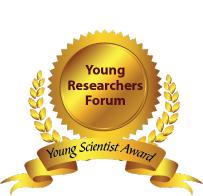Molecular Astrophysics
Molecular astrophysics, developed into a rigorous field of investigation by theoretical astrochemist Alexander Dalgarno beginning in 1967, concerns the study of emission from molecules in space. There are 110 currently known interstellar molecules. These molecules have large numbers of observable transitions. Lines may also be observed in absorption—for example the highly redshifted lines seen against the gravitationally lensed quasar PKS1830-211. High energy radiation, such as ultraviolet light, can break the molecular bonds which hold atoms in molecules. In general then, molecules are found in cool astrophysical environments. The most massive objects in our galaxy are giant clouds of molecules and dust known as giant molecular clouds. In these clouds, and smaller versions of them, stars and planets are formed. One of the primary fields of study of molecular astrophysics is star and planet formation. Molecules may be found in many environments, however, from stellar atmospheres to those of planetary satellites. Most of these locations are relatively cool, and molecular emission is most easily studied via photons emitted when the molecules make transitions between low rotational energy states.
- Electromagnetic spectrum
- Molecules and Photons – Spectroscopy and Collisions
- Diatomic molecules
- Lasers, light beams and light pulses
- Optical BLOCH Equations
Related Conference of Molecular Astrophysics
9th International Conference on Astronomy, Astrophysics and Space Science
17th International Conference on Exhibition on Lasers, Optics & Photonics
11th International Conference on Quantum Physics and Mechanics
Molecular Astrophysics Conference Speakers
Recommended Sessions
Related Journals
Are you interested in
- Acute Decompensated Heart Failure - Heart Failure conferences 2026 (UK)
- Acute Decompensated Heart Failure - Heart Failure conferences 2026 (UK)
- Advanced Heart Failure Management - Heart Failure conferences 2026 (UK)
- AI-Enhanced Cardiac Imaging for Heart Failure - Heart Failure conferences 2026 (UK)
- Applied Physics - Physics 2026 (France)
- Arrhythmias in Heart Failure - Heart Failure conferences 2026 (UK)
- Artificial Intelligence in Heart Failure Diagnosis - Heart Failure conferences 2026 (UK)
- Artificial Intelligence in Heart Failure Prognosis - Heart Failure conferences 2026 (UK)
- Astro-Particle Physics and Cosmology - Physics 2026 (France)
- Astrobiology and Life Beyond Earth - ASTRO PHYSICS 2026 (France)
- Astrophysics - Physics 2026 (France)
- Atomic, Molecular and Optical Physics - Physics 2026 (France)
- Biomarkers in Heart Failure - Heart Failure conferences 2026 (UK)
- Biophysics - Physics 2026 (France)
- Cardiac Resynchronization Therapy in Heart Failure - Heart Failure conferences 2026 (UK)
- Classical and Modern Physics - Physics 2026 (France)
- Condensed Matter Physics - Physics 2026 (France)
- Coronary Artery Disease and Heart Failure - Heart Failure conferences 2026 (UK)
- Cosmology and the Early Universe - ASTRO PHYSICS 2026 (France)
- Earth Observation and Remote Sensing - ASTRO PHYSICS 2026 (France)
- Electromagnetism and Electronics - Physics 2026 (France)
- Exercise and Cardiac Rehabilitation in Heart Failure - Heart Failure conferences 2026 (UK)
- Future Trends: Interstellar Travel and Space Colonization - ASTRO PHYSICS 2026 (France)
- Gravitational Waves and High-Energy Astrophysics - ASTRO PHYSICS 2026 (France)
- Heart Failure and Renal Dysfunction - Heart Failure conferences 2026 (UK)
- Heart Failure with Preserved Ejection Fraction - Heart Failure conferences 2026 (UK)
- Heart Failure with Preserved Ejection Fraction Challenges - Heart Failure conferences 2026 (UK)
- Heart Transplantation in Advanced Heart Failure - Heart Failure conferences 2026 (UK)
- Heavy-Ion Physics - Physics 2026 (France)
- High Energy Nuclear Physics - Physics 2026 (France)
- Lifestyle Interventions in Heart Failure - Heart Failure conferences 2026 (UK)
- Material Physics - Physics 2026 (France)
- Mechanical Circulatory Support in Advanced Heart Failure - Heart Failure conferences 2026 (UK)
- Medical Physics - Physics 2026 (France)
- Myocardial Remodeling and Fibrosis - Heart Failure conferences 2026 (UK)
- Nanotechnology - Physics 2026 (France)
- Neutron Scattering - Physics 2026 (France)
- Novel Pharmacological Therapies in Heart Failure - Heart Failure conferences 2026 (UK)
- Observational Astronomy and Telescope Technology - ASTRO PHYSICS 2026 (France)
- Particle Accelerators - Physics 2026 (France)
- Planetary Science and Exoplanets - ASTRO PHYSICS 2026 (France)
- Plasma Science - Physics 2026 (France)
- Pulmonary Hypertension in Heart Failure - Heart Failure conferences 2026 (UK)
- Quantum Physics - Physics 2026 (France)
- Quantum Science and Technology - Physics 2026 (France)
- Radiation Protection - Physics 2026 (France)
- Renal Dysfunction and Cardiorenal Syndrome - Heart Failure conferences 2026 (UK)
- Solar Physics and Space Weather - ASTRO PHYSICS 2026 (France)
- Space Missions, Satellites, and Instrumentation - ASTRO PHYSICS 2026 (France)
- Space Technology, Robotics, and AI in Astronomy - ASTRO PHYSICS 2026 (France)
- Stellar and Galactic Astrophysics - ASTRO PHYSICS 2026 (France)
- Telemonitoring and Remote Care in Heart Failure - Heart Failure conferences 2026 (UK)
- Theoretical Astrophysics and Computational Modeling - ASTRO PHYSICS 2026 (France)
- Theory of Relativity - Physics 2026 (France)
